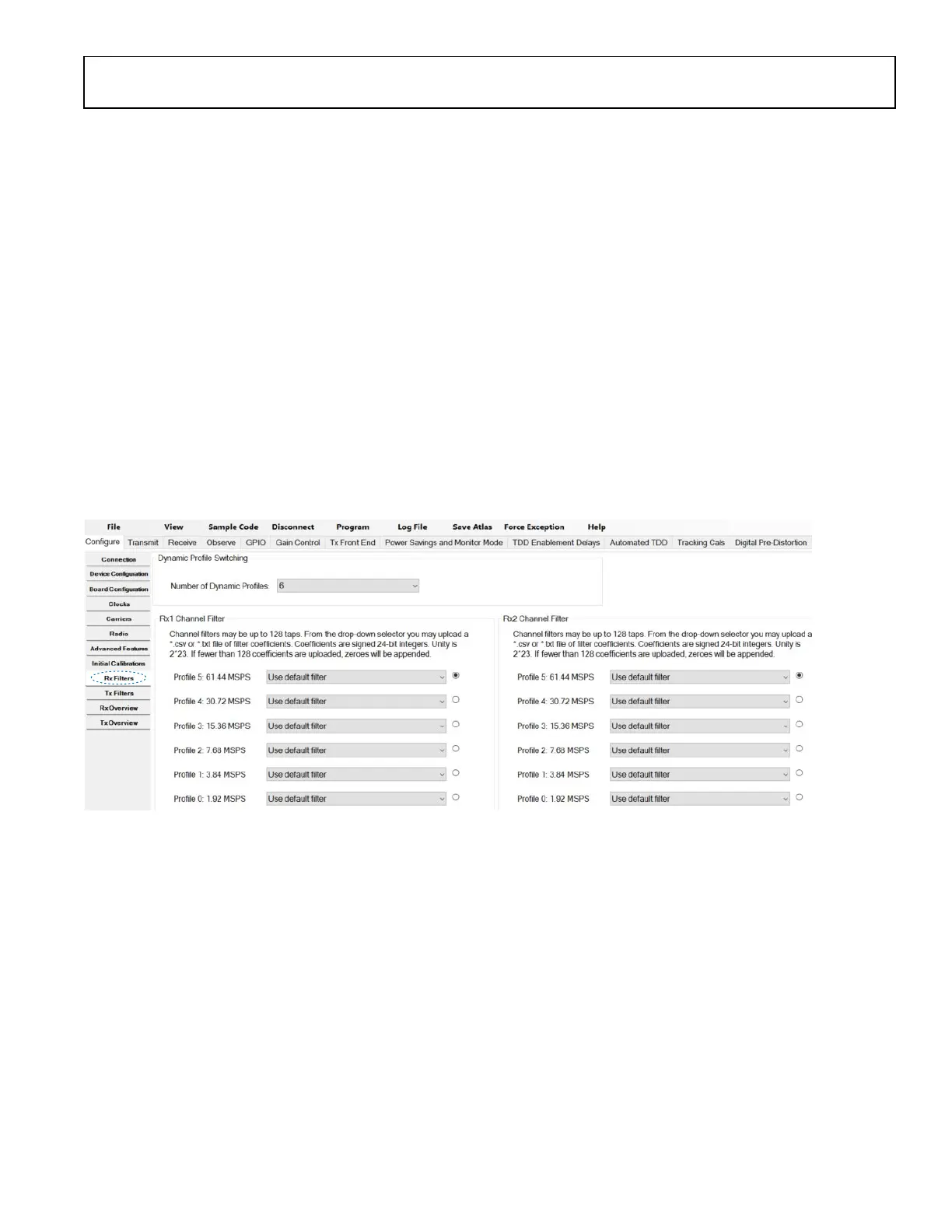Preliminary Technical Data UG-1828
Rev. PrC | Page 219 of 338
• Only the LVDS interface is supported for all profiles and no switching between LVDS and CMOS is allowed.
• Switching between different TDD channel modes, or between different FDD channel modes, or between TDD and FDD
channel modes is not permitted with a profile change.
• The LO frequency of any channel cannot be modified with a profile change.
• The BBPLL frequency cannot be modified with a profile change.
• Tx/Rx TIA bandwidth and DAC/ADC sample rate could not change with a profile switch.
• The physical user interface (e.g. CMOS versus LVDS, or interleaved data versus non-interleaved data) cannot be modified with a
profile change.
• SSI rate will be the highest rate of all dynamic profiles.
• ADRV9001 will either operate in Frequency Hopping mode or DPS mode, never both.
Note those limitations might be removed or relaxed in future releases.
DPS OPERATIONS IN TES
TES provides a user interface for experimenting DPS. In the current implementation, LTE 61.44MSPS profile must be configured under
the “Device Configuration” page in either TDD or FDD mode. To enable DPS, under “Rx Filters” tab, choose the “Number of Dynamic
Profiles” to be 6 and then define the Rx PFIR coefficients for all 6 enabled dynamic profiles. User has the option of disabling PFIR, using
the default PFIR or uploading a set of custom PFIR coefficients, as shown in Figure 205.
Figure 205: DPS Initialization in TES
The frequency response of the PFIR for a certain dynamic profile can be displayed in TES by selecting this profile.
After programming, main profile is used as the initial profile to operate. To perform DPS, as shown in Figure 206, user should first move
all channels (all Tx and Rx channels) to “Primed” state, then pick a new profile to request a profile switch from the “Sample Rate” drop
down menu under either “Transmit” or “Receive” tab. After that, play Tx and/or Rx to observe the profile change and verify that all
channels work as expected.

